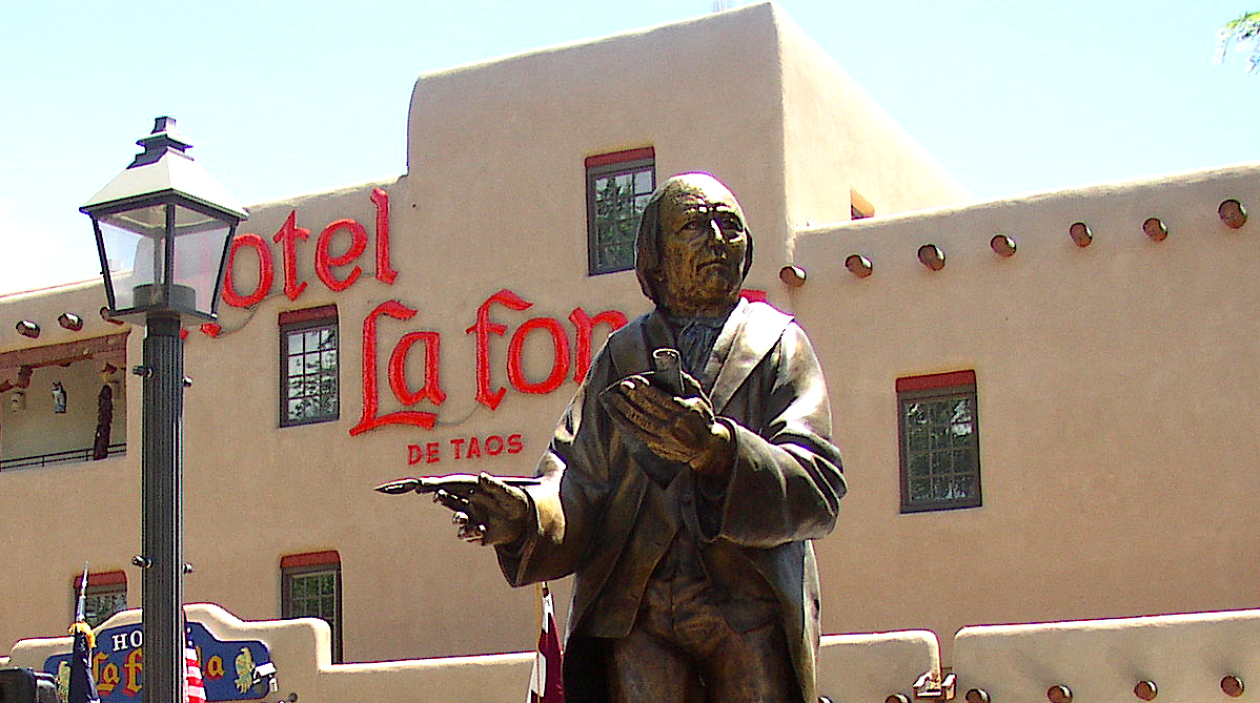Santiago Valdez, Benjamin M. Read, and his brother Larkin Gregory Read were business partners, friends and colleagues. They were also linked by marriage. Larkin was married to Teodora Martinez, the daughter of Santiago Valdez. If we are to believe that Santiago Valdez was indeed a son of Padre Martinez, as family oral history strongly asserts, then Larkin’s wife Teodora would have been the Padre’s granddaughter. The brothers Read and Santiago Valdez much later became a team of translators for the Laws of New Mexico: Compiled in 1884.
Santiago Valdez, putative son of Padre Antonio José Martinez of Taos, was the main author of the Padre’s 1877 biography, Biografía del Presbítero Antonio José Martínez, Cura de Taos, complied a decade after the death of the priest. The original Spanish manuscript–literally hand-written and partially translated into English–is included in the Ritch Collection at the Huntington Library in Sierra Made adjacent to Los Angeles. In 1993, I did a contemporary English version of the work available from the NM State Archives and UNM library. Mr. Peter Blodgett, Huntington Library manuscript curator at the time, encouraged me to have my version published. In the hopes of having a scholarly edition published, I lent my copy of the manuscript to Fr. Thomas Steele, S.J. accomplished author regarding people and things New Mexican. Together with Vicente Martínez of Taos—a close relative of Valdez– and Mr. Robert Torrez—former NM State Historian and protégé of Fr. Steele—we hoped to publish a scholarly annotated edition of the biography, perhaps bilingual, together with two other key documents relating to cunabula of the Priest of Taos: his 1840 Autobiography written in Durango, and his 1867 Last Will and Testament.
In his Last Will and Testament, Padre Martínez named Santiago Valdez as executor and heir of his books and papers. In December of 1868, a year and a half after the Padre’s death, Valdez first began writing in Spanish the biography of the Padre.
Benjamin Maurice Read, friend and business partner of Santiago Valdez, did a preliminary translation of the manuscript after Samuel Elliot—related to the earliest efforts of the NM Historical Society—began translating the first twelve pages of the manuscript. On a separate page attached to the Spanish-English manuscript, Larkin Gregory Read– younger brother of Benjamin M. Read noted in his own hand that he had “faithfully copied” the original (Spanish) manuscript in good handwriting, and that his elder brother Benjamin Maurice Read was to further “annotate and amplify” it. Larkin, having married into the Martínez clan through the Padre’s granddaughter, was a good resource for the work of his brother. Valdez completed the work in mid January1877 near the Padre’s birthday, the tenth anniversary of the Padre’s death, and a year after the nation’s first Centennial,.
[For further information on Santiago Valdez, author of the 1877 Biography of Padre Antonio José Martinez, see the lineage and other documentation of (Last Will and Testament of Padre Martinez) researched and compiled by Vicente M. Martinez at .]
